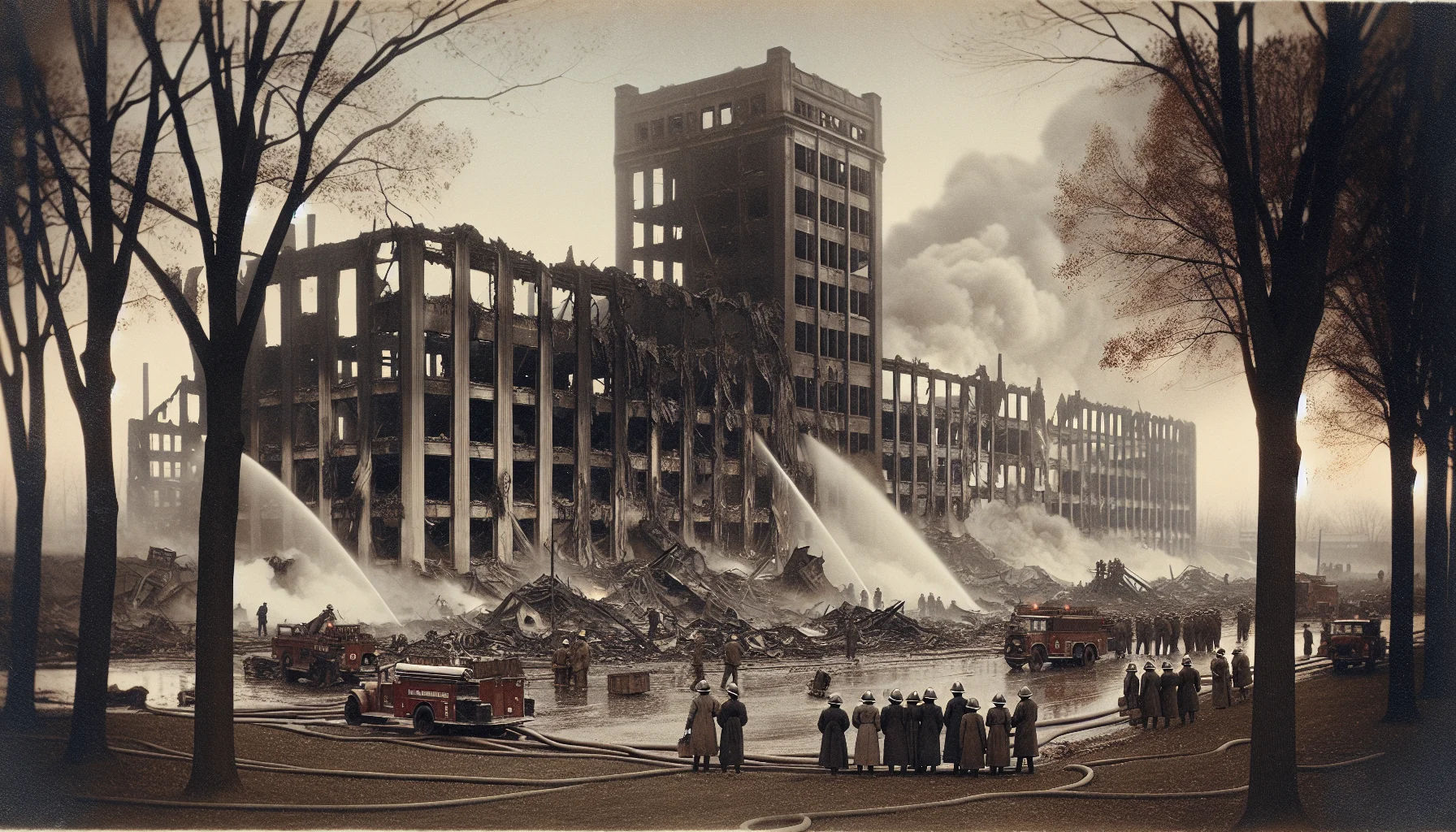
The Kader Toy Factory Fire
by: The Calamity Calendar Team
May 10, 1993
Tragedy Ignites
On the sweltering afternoon of May 10, 1993, life at the Kader Toy Factory seemed as routine as any other day. The hum of sewing machines filled the multi-story complex located in Sam Phran District, Nakhon Pathom Province, Thailand. This facility was a crucial part of the global supply chain for stuffed toys, its operations dictated by international demand. Yet, within the walls of this bustling factory lay a silent danger, cloaked by complacency and oversight.
The initial spark was small—almost innocuously so. But its genesis in a first-story storage area teeming with highly flammable materials set the stage for calamity. A fire erupted, fueled by the fabrics and plastics meant for toy production. At first, there was confusion. Many workers, young women for the most part, assumed this was a routine drill. But the flames were real and remorseless, consuming available fuel and quickly coaxed by the building’s design flaws.
A Harrowing Chain of Events
As the fire ignited and spread with terrifying speed, the ill-prepared emergency plan was laid bare. Locked doors became barriers, dimming hope of escape. Workers stumbled toward exits that were inadequate in number and design. The building’s construction—mainly a patchwork of cheap materials—could not withstand the heat. In a devastating chain reaction, the roof collapsed into the inferno, trapping those who hadn't managed to reach safer ground.
Emergency services were mobilized, their sirens echoing through the chaotic scene. Firefighters arrived to a daunting sight—the factory engulfed, doing their best against an enemy already out of control. Smoke clawed at the sky, marking the site as a grim monument of missed warnings and neglected standards.
Counting the Cost
When the fire burned itself out, the scale of the tragedy emerged. 188 lives were lost, 469 injured, and countless families forever altered. It was the deadliest factory fire in modern history up to that point, and its impact resonated far beyond the borders of Thailand. Economically and emotionally, the scars ran deep. The very community that had fueled the factory's operations was now confronted with unimaginable loss.
Internationally, the disaster cast a harsh light on the conditions faced by factory workers in the global marketplace. It underscored the precarious balance between production efficiency and worker safety—a balance that had tipped disastrously in favor of cost-cutting and rapid output.
Thanks for subscribing!
Awakening to Change
The outpouring of grief quickly transformed into calls for accountability and reform. Under significant international pressure, Thailand enacted measures designed to prevent such a tragedy from recurring. Factory safety standards were scrutinized and overhauled. More rigorous inspections became a mandate rather than an exception. For a country eager to participate in global markets, the way forward demanded adherence to improved safety protocols.
Training programs emerged, targeting not just workers but management structures within factories. These initiatives aimed to foster a culture of safety and preparedness, hoping to prevent negligence on any scale. The reverberations of this disaster prompted changes across Southeast Asia, countries recognizing the stark lessons taught by the ashes of the Kader Fire.
A Legacy of Safety Advocacy
To this day, the Kader Toy Factory Fire stands as more than a cautionary tale; it is a cornerstone in discussions about labor rights and safety in manufacturing. Scholars and activists often invoke its somber legacy to push for continued advancements in worker protections. It serves as a reminder that human cost should never be currency in industrial economies.
Investigations highlighted systemic negligence and fueled ongoing advocacy for improved conditions across all worker environments. Much has changed due to the vigilance sparked by this tragedy. Yet, the question remains: Are we doing enough? The lessons from May 10, 1993, caution against complacency, urging a proactive stance in securing safe, humane conditions for workers worldwide—a goal still in progress but spurred forward by the memory of those who perished.
Stay in the Loop!
Become a Calamity Insider and get exclusive Calamity Calendar updates delivered straight to your inbox.
Thanks! You're now subscribed.